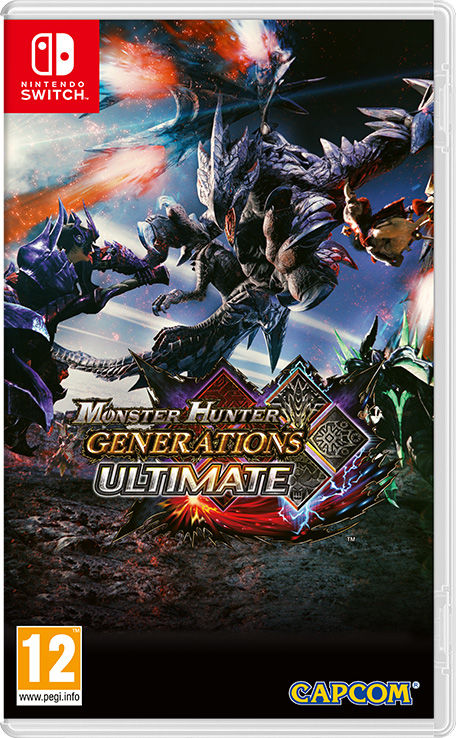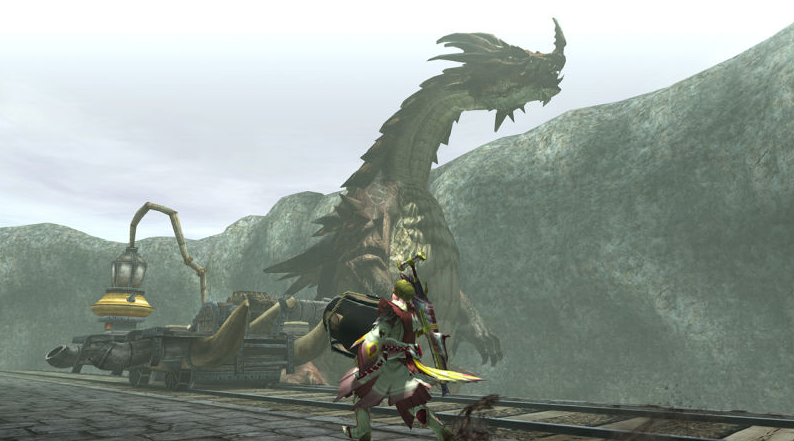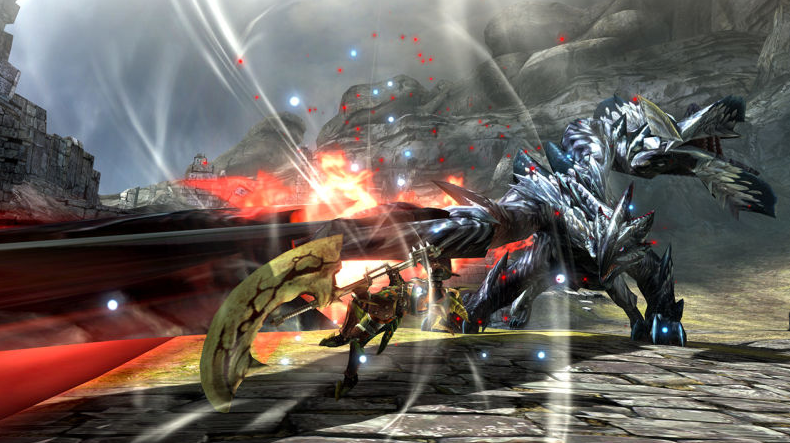Monster Hunter games are action role-playing games, set in a fantasy genre. Players take the role of a Hunter that serves to help protect a village or help research the large monsters that roam the various areas near the village. This is generally presented through a series of quests to slay or trap a monster, but can include numerous optional challenges.
The core feature of Monster Hunter is its compulsion loop. A player’s Hunter does not grow as in traditional computer role-playing games and has no intrinsic attributes whatsoever. Instead, the Hunter’s abilities are defined by the specific weapons and armor they select prior to leaving on a mission. The games have more than ten weapon archetypes, such as a sword, axe, lance, hammer, and bow, each with distinct advantages and downsides, and a vast array of specific weapons that provide attack power and the ability to inflict elemental or status effects on a monster. Multiple pieces of armor can be worn, providing defensive value and also resistances to certain types of attacks or status effects, and additional skills that boost the Hunter’s attributes while in the field. In later games, additional equipment atop armor can be worn to further boost those skills, such as gemming an armour to provide certain skills. While the Hunter starts the game with basic equipment and can buy some equipment, most of the gear must be made by collecting resources from the field, including parts that are carved from downed monsters or given as rewards from completing quests successfully. The gameplay loop becomes one of selecting the best equipment to defeat a specific monster, and using the parts from that creature to make better gear as to face even tougher adversaries. However, as the parts that are obtained are distributed based on certain rarity factors, a player may need to grind, hunting the same monster repeatedly to get the right parts. Rarer items are only available on harder difficulty settings, so the player may need to play online in order to receive these items.
Once a quest is selected and the player equips their Hunter, they enter one of several environments and must track down the monster, as well as collect other resources used in crafting weapons, armor, and restorative items. Alternatively, players are tasked with collecting a certain item. While in the field, the player must watch their Hunter’s health and stamina. The Hunter will faint if they lose all their health and be returned to the field’s base camp where they can continue the mission, but fainting three times will fail the mission (fainting once will fail the mission in offline training quests). Stamina is consumed by most attacks and actions, but can be regained quickly by standing still. However, should the Hunter use all their stamina, they will be unable to react until they fully recover, leaving them vulnerable to any attack. Stamina also decreases gradually from its maximum amount to a minimum point, and can only be replenished by eating cooked meat or other items that increase stamina. The games offer a number of tools and other equipment that can be used to help defeat a monster and recover health and stamina while in the field. Combat is centered around watching for a monster’s tells prior to an attack to able to dodge it and/or make a counter-attack, and looking for openings to unleash strings of attack combos, depending on the Hunter’s current weapon. In most cases, once the player has initiated an action, such as a combat maneuver or taking a recovery item, they cannot cancel that move until its animation cycle is complete (a method called “animation priority”), which also may leave them vulnerable to a monster’s attack in mid-maneuver. In addition to monster parts for completing a quest, the Hunter is rewarded with Zenny, the in-game currency.
Monster Hunter Generations Ultimate plays with more emphasis on action and customization. It was released in Japan as Monster Hunter X. It adds new hunting styles and Hunter Arts abilities to make Generations the most customizable and personalized Monster Hunter yet.
Cover Art:
Screenshots:




